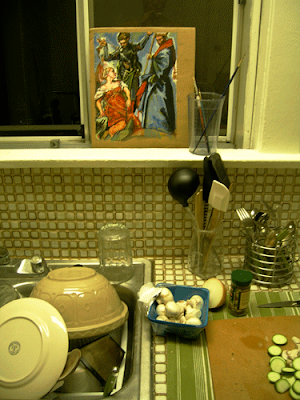
A report on knowledge from Southern Vermont! The thing I love most about this story is the ingenuity of the detective work by which the police were able to apprehend this clever criminal ...
Springfield man charged with passing homemade $20
By Josh O'Gorman STAFF WRITER - Published: April 18, 2009
WHITE RIVER JUNCTION — A Springfield man is facing 14 years in prison after he allegedly used a counterfeit $20 bill to buy cigarettes and beef jerky.
Charles F. Wolfenbarger, 20, pleaded innocent Tuesday in White River Junction District Court to a felony charge of counterfeiting paper money. He was released without posting bail on conditions he not use a printer, scanner, copier or any other duplicating equipment.
According to an affidavit filed with the court, March 13, police responded to Williams Country Store in Cavendish and spoke with Arlene Willis, who told police Wolfenbarger had come in that morning to purchase cigarettes, soda and beef jerky.
Willis said Wolfenbarger paid for the items with a counterfeit bill, which the cashier immediately recognized as fake. Police said the bill was obviously counterfeit because it was too dark, too thick and one of the corners had started to peel apart.
Police later learned the bill was made on a computer scanner, using two pieces of paper that were glued together, affidavits state.
Records state Willis followed Wolfenbarger out of the store and confronted him about the funny money, and he reportedly told her he had gotten the bill from a bank in Ludlow.
Willis was able to give police Wolfenbarger's name and directions to his house because he had filled out a job application at the store several weeks before.
The next day police interviewed Wolfenbarger, who told police he went into the store, paid for his items, asked about the status of his job application and left. Wolfenbarger told police he had gotten the bill from a bank in Springfield.
On March 19, police and a Secret Service agent conducted a follow-up interview, in which Wolfenbarger admitted knowing the bill was fake. According to Wolfenbarger's own sworn affidavit, a friend gave him the bill and asked him to spend it.
"I needed food so figured why not," Wolfenbarger wrote.
Wolfenbarger told police he intended to pay back the $20 he owes. In addition to prison, Wolfenbarger is facing a $1,000 fine if convicted.















